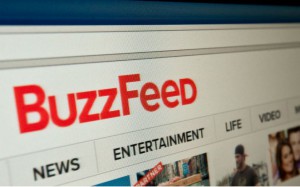September 2, 2015 9:37 am
Published by Kirsty Sharman
Editor’s note:
Download this case study to learn how Vodacom used Influencer Marketing to create online talkability for the music streaming service Deezer, a Vodacom partner

Vodacom wanted to increase awareness with various youth, entertainment and music audiences on why they should consider music streaming and why Vodacom Deezer is the best option. With Deezer being an online download, the objective was to create the conversation online where potential users could access the download easily.
To achieve the goal of igniting online conversation, Vodacom used Webfluential to search for music loving influencers, who could create relevant content about music streaming and Vodacom’s partnership with Deezer that they would share with their audiences. The Webfluential team then briefed the approved influencers, managed the campaign logistics and workflow, tracked the results and reported on the findings.

Once the influencer content starting rolling-out, the campaign hashtag trended on Twitter countrywide and the various blog posts, Facebook posts and Tweets collectively reached nearly 4 million people. Whilst reach is important when your objective is to build awareness, the success of the engagement of the campaign is worthy of highlighting. Over 11, 250 people engaged with the influencer content (that’s over 11, 250 likes, comments, shares and link clicks).
Jeanine Ferreira, Portfolio Manager of Content and Digital Marketing for Vodacom, was impressed with Webfluential and the success of the campaign. “Webfluential offers excellent service and a thorough understanding of Influencer Marketing. They have made our journey into this new way of advertising both exciting and rewarding,” says Jeanine.
Download the Vodacom Influencer Marketing Case Study to find out more.

Share this article
August 19, 2015 1:51 pm
Published by Murray Legg
Whether you’re a blogger or a brand, you’ve grown and refined your tone and approach to creating and sharing content with your audience over a period of time. The topics you discuss, the articles you share and the amount you engage with people is not only an expression of yourself or your brand, but rewarding on a social, personal and economic front.
We recently wrote about the six steps to building a successful influencer marketing plan, outlining best practice to engage with influencers and achieve meaningful results with your influencer marketing campaigns. But what about the best approach to captivating your audience through the content you create and go on to maximize the shareability of your it?
In 2006, while still at the Huffington Post, Jonah Peretti started BuzzFeed with a small amount of seed funding. It’s gone on to become an internet content hub of huge significance. Peretti has experience in creating content that gets huge traction online. Remember 40 Things That Will Make You Feel Old (3.2 million views), and the 45 Most Powerful Images of 2011 (10.1 million)?
We looked into the online forums and business analyses of the BuzzFeed model and have created a list of tips to putting together great branded content.

Emotionally engaging content does best
The reason kittens and memes tend to be shared so much is their innate emotional connection. By exploring the emotional connection of your content with your audience, you’ll have a good shot at it getting traction. Think about a fitness brand doing a piece on the 15 best workout songs, for example.
Target the “Bored at Work Network”
“Bigger than the BBC, CNN or any traditional media network is the “BWN” and is made up of millions of bored office workers blog, Tweet, Facebook and IM all day.” In the new world of networked media, where links passed via social networks can send millions of pageviews to a site in a matter of minutes, Peretti says the bored-at-work network effectively “decides what content is popular today.”
Employ the mullet strategy
Business in the front, party in the back. YouTube, CNN, BuzzFeed and Huffington Post all have an incredible slick front page that’s visual and able to draw people into their content. Behind the front page, users can argue, comment and fight things out in the comments section. Remember, you wrote emotional content to start with, so give your audience an easy way to discuss it.
If your readers are on your website, make it shareable
Every BuzzFeed article has several icons at the top and bottom of its articles, for sharing on StumbleUpon, Google Plus, and Twitter, among others. Users can also pass judgment on a story using BuzzFeed’s proprietary yellow reaction button system, which include “LOL,” “omg,” “wtf,” “fail,” and “ew.”
Seed the content in fertile land
“Big seed marketing” hinges on the basis that content going viral needs to be different to how a disease goes viral. A virus epidemic starts with a single patient, “patient zero” and has a break out from there. But what if there were many patient zeros, based in different networks, giving your content an opportunity to go on to a wider audience?
Assume people aren’t reading your content on your website
“What if you assume people’s home page isn’t your site but Facebook or Twitter or StumbleUpon, or one of these social sites?” Repurpose your content and share it on your social channels to reach a wider audience.
Sign up as a marketer if you would like to find out more or start using our platform to run successful Influencer Marketing campaigns.
References:
http://www.businessweek.com/printer/articles/14770-buzzfeed-the-ad-model-for-the-facebook-era
http://www.techtimes.com/articles/38013/20150306/buzzfeed-make-money.htm
https://hbr.org/2007/05/viral-marketing-for-the-real-world
Share this article





